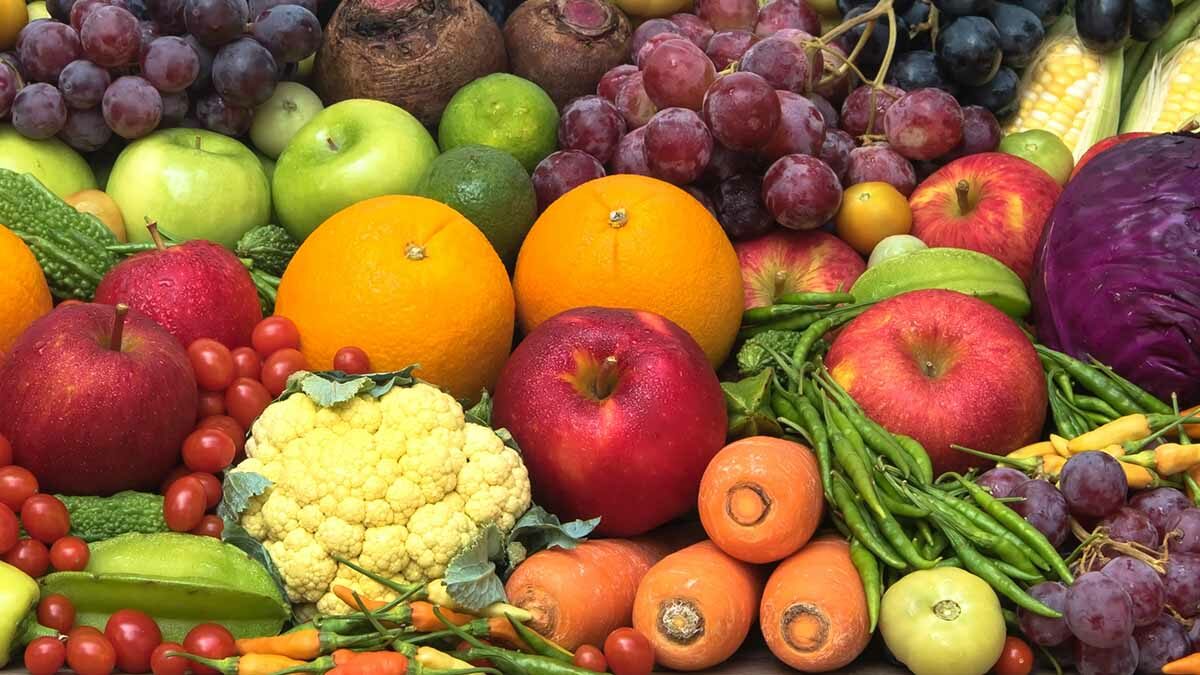One of the reasons some studies haven’t shown more impressive results tying disease reduction to the quantity of fruit and vegetable consumption may be because of quality of fruit and vegetable consumption. People are more likely to eat bananas than blueberries; cucumbers instead of kale. Berries are the healthiest fruits (see Best Berries) and greens are the healthiest vegetables.
Variety is also important. We know, for example, spinach is healthier than lettuce, and a big salad is better than small, but is it better to get the spring greens mesclun mix than even the straight spinach? Is it healthier to eat one apple and one orange than it is to eat three apples or three oranges? Though there are generic plant compounds like vitamin C that are found scattered throughout the plant kingdom, there are also specific phytonutrients produced by specific plants to perform specific functions—both in their organs and ours. We miss out on these if we’re stuck in a fruit and vegetable rut, even if we’re eating many servings a day.
There are tens of thousands of these phytonutrients (see my 2-min. Phytochemicals: The Nutrition Facts Missing From the Label), but they’re not evenly distributed throughout the plant kingdom. Those wonderful glucosinolates I discuss in The Best Detox, Broccoli Versus Breast Cancer Stem Cells, and Lung Cancer Metastases and Broccoli, for example, are found almost exclusively in the cabbage family. Likewise, you won’t get lemonoids like lemonin and limonol or tangeretin in apples. Comparing apples and oranges is like, well, comparing apples and oranges.
At the same time, all fruits are just fruits, whereas vegetables can be any other part of the plant. As I lay out in my 2-min. video Apples and Oranges: Dietary Diversity, roots harbor different nutrients than shoots. Carrots are roots, celery and rhubarb are stems, dark green leafies are leaves of course, peas are pods, and cauliflower is true to it’s name as a collection of flower buds, but all fruits are just fruits. The available evidence suggests it may be most important to get in a variety of vegetables so you can benefit from all the different parts of the plant.
We know that whole foods are better than eating individual nutrients, for example a carrot is better than a beta carotene pill, because of what’s been called nutrient synergy where the whole is greater than the sum of its parts, as many of the nutrients interact, work together, and complement one another. The same can be said of various food combinations. For example, I’ve talked about the wonders of the spice turmeric, but the key component has very poor bioavailability. Just a tiny bit gets into your bloodstream after eating a nice curry—unless, you add some black pepper. The phytonutrient in black pepper boosts the absorption of the turmeric phytonutrient 2000%! That’s why dietary diversity is so important.
In Garden Variety Anti-Inflammation I detail some recent studies that looked at disease risk and the variety of fruit and vegetable consumption. Researchers found no difference in inflammation between those eating 6 servings of vegetables a day and those eating 2 servings, but those eating the more variety—even if they didn’t necessarily eat greater overall quantities—ended up with significantly less inflammation in their bodies. This supports the American Heart Association’s latest dietary guidelines, which, for the first time, added a recommendation for also eating a variety of fruits and vegetables.
For more on the anti-inflammatory nature of plant foods, see my 1 min. video Anti-Inflammatory Antioxidants.
-Michael Greger, M.D.
